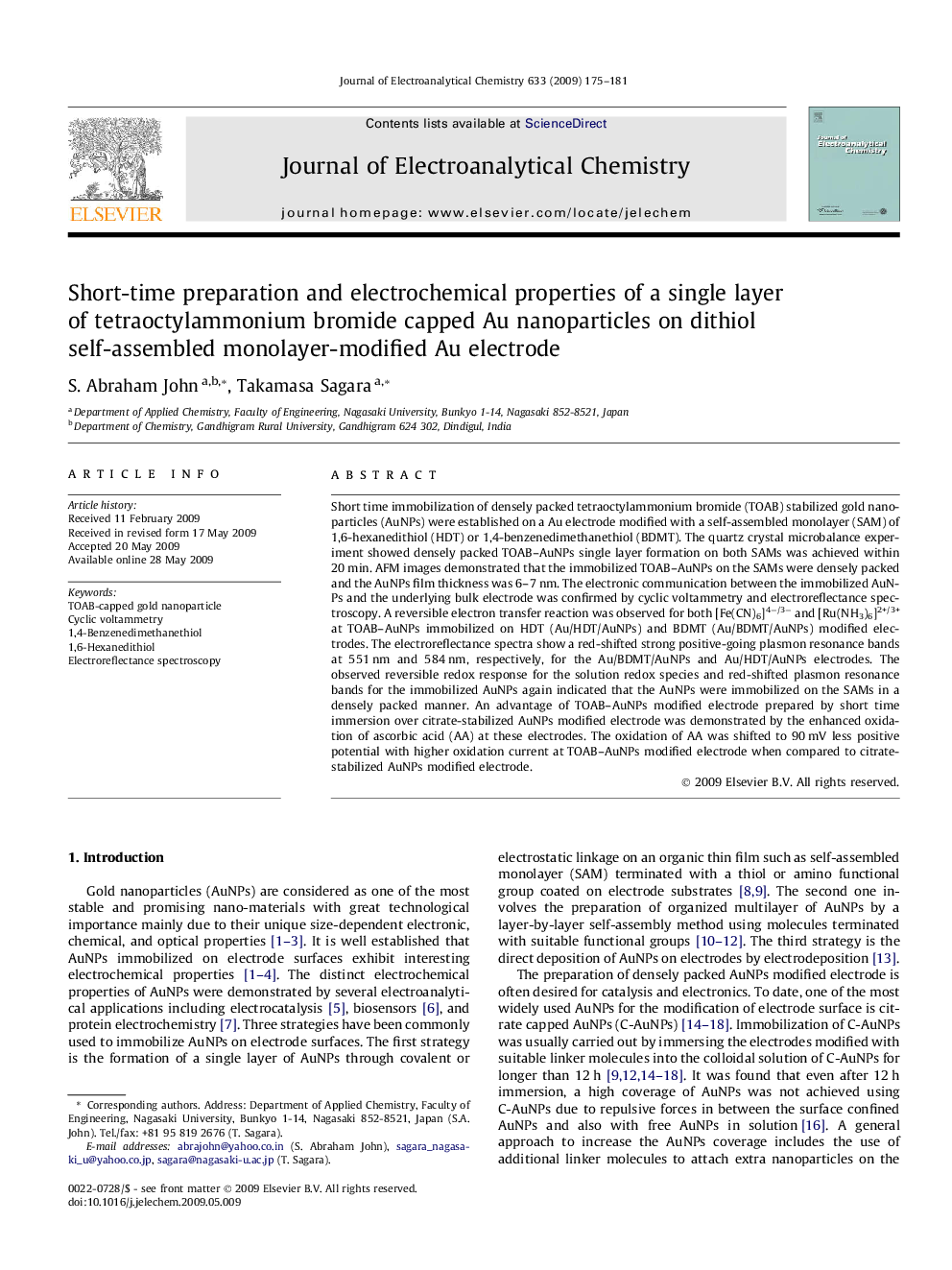| Article ID | Journal | Published Year | Pages | File Type |
|---|---|---|---|---|
| 220200 | Journal of Electroanalytical Chemistry | 2009 | 7 Pages |
Short time immobilization of densely packed tetraoctylammonium bromide (TOAB) stabilized gold nanoparticles (AuNPs) were established on a Au electrode modified with a self-assembled monolayer (SAM) of 1,6-hexanedithiol (HDT) or 1,4-benzenedimethanethiol (BDMT). The quartz crystal microbalance experiment showed densely packed TOAB–AuNPs single layer formation on both SAMs was achieved within 20 min. AFM images demonstrated that the immobilized TOAB–AuNPs on the SAMs were densely packed and the AuNPs film thickness was 6–7 nm. The electronic communication between the immobilized AuNPs and the underlying bulk electrode was confirmed by cyclic voltammetry and electroreflectance spectroscopy. A reversible electron transfer reaction was observed for both [Fe(CN)6]4−/3− and [Ru(NH3)6]2+/3+ at TOAB–AuNPs immobilized on HDT (Au/HDT/AuNPs) and BDMT (Au/BDMT/AuNPs) modified electrodes. The electroreflectance spectra show a red-shifted strong positive-going plasmon resonance bands at 551 nm and 584 nm, respectively, for the Au/BDMT/AuNPs and Au/HDT/AuNPs electrodes. The observed reversible redox response for the solution redox species and red-shifted plasmon resonance bands for the immobilized AuNPs again indicated that the AuNPs were immobilized on the SAMs in a densely packed manner. An advantage of TOAB–AuNPs modified electrode prepared by short time immersion over citrate-stabilized AuNPs modified electrode was demonstrated by the enhanced oxidation of ascorbic acid (AA) at these electrodes. The oxidation of AA was shifted to 90 mV less positive potential with higher oxidation current at TOAB–AuNPs modified electrode when compared to citrate-stabilized AuNPs modified electrode.
